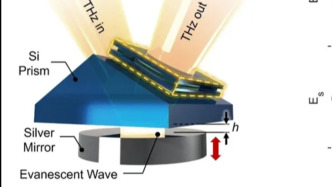
On the 22nd, the reporter learned from the Institute of Space Information Innovation of the Chinese Academy of Sciences that after two years of research, the institute's researchers have developed a new terahertz wave polarization modulator, successfully achieving high-precision dynamic control of the polarization state of ultra-wideband terahertz waves.
This key technological breakthrough will promote the application of terahertz waves in the next generation of wireless communications, non-destructive testing of cultural relics, and biological micro-sensing. The relevant research results were published in the international academic journal Optics.
Terahertz waves refer to electromagnetic waves with a frequency range of 0.1 terahertz to 10 terahertz. They are located between microwaves and infrared rays on the electromagnetic spectrum and are a band that has not yet been widely developed and utilized. They have the characteristics of high penetration and low photon energy, so they are called "security experts" and have important applications in security inspections, non-destructive testing and other fields. They also have the characteristics of high frequency and wide bandwidth, so they are considered to be an important technical direction for the future development of 6G.
To achieve the above applications, the polarization state of terahertz waves must be controlled. However, actively controlling the polarization of terahertz waves is very challenging. In this study, the researchers developed a new terahertz wave polarization modulator that can flexibly control the polarization of terahertz waves and output any polarization state.